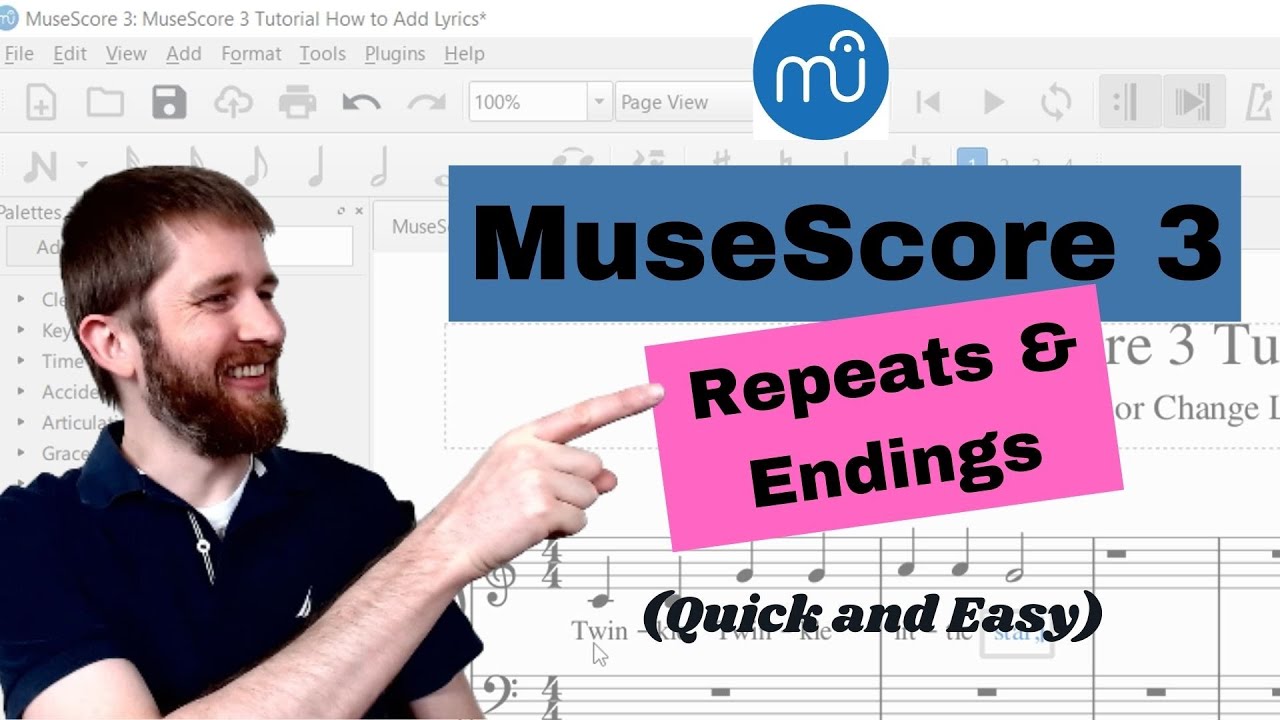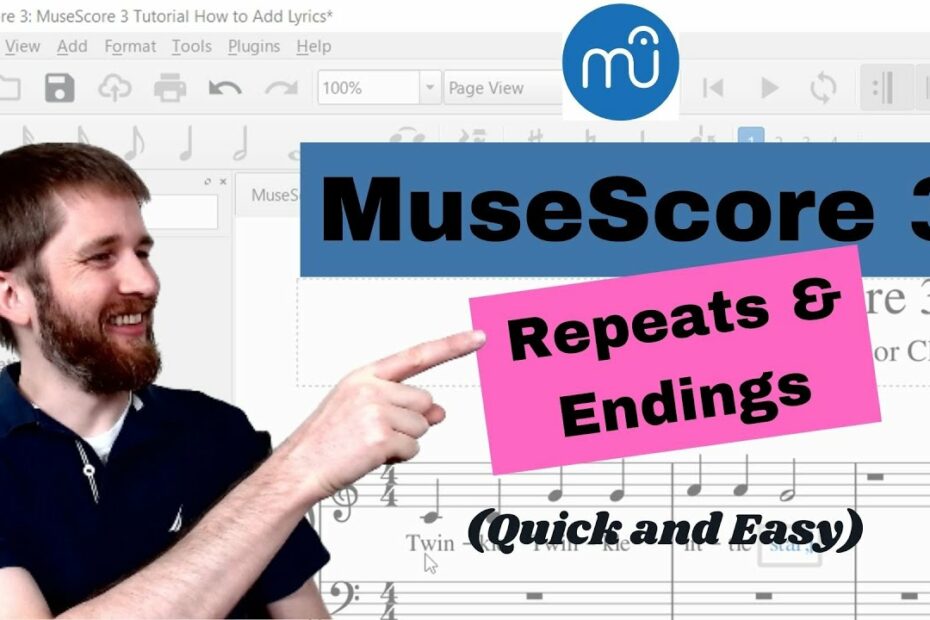Let’s discuss the question: how to do first and second ending in musescore. We summarize all relevant answers in section Q&A of website Achievetampabay.org in category: Blog Finance. See more related questions in the comments below.

How do you notate first and second ending?
When a First and Second Ending is required at the end of the music, the performer plays the First Ending, then goes back to the beginning of the music (following the Repeat Sign) and plays again. The Second Time through, the performer skips the First Ending and goes directly to the Second Ending.
How do you get the first ending in Musescore?
To add a volta to the score
Use one of the following methods: Select a measure, or range of measures and click a Volta icon in the Lines palette (double-click in versions prior to 3.4). Drag-and-drop a volta from the Lines palette, then adjust the length as required (see below).
MuseScore 3: How to Add Repeat Signs with 1st and 2nd Endings, Bonus: Segno and Last Bar Repeats
Images related to the topicMuseScore 3: How to Add Repeat Signs with 1st and 2nd Endings, Bonus: Segno and Last Bar Repeats

How do you make ties leading to the second ending in Musescore?
Insert a new measure before the start of the 2nd ending, and insert notes that match the pitch and duration of the tied notes that lead into the 1st ending. Tie the notes to the notes that begin the following measure. Hide the notes in the new first measure of the 2nd ending while leaving the ties visible.
How do you repeat 4 times in Musescore?
- Select a measure, then click the desired repeat symbol in the palette (double-click in versions prior to 3.4).
- Drag and drop a repeat symbol from the palette onto (not above!) the desired measure (so the measure changes color).
What is a 2nd ending in music?
[English] Often, repeated sections of a composition will have different endings for each repeat of that section. This can be to create the symmetry of an antecedent and consequent phrase or simply to extend the composition.
How do you notate first and second time bars?
When a repeat calls for a different ending, numbered brackets above the bars indicate which to play the first time (1.), which to play the second time (2.), and so on if necessary. These are called “first-time bars” and “second-time bars”, or “first and second endings”.
What is tie and slur in music?
A slur is a curved line that connects two or more notes of different pitches. A slur means the notes should be played as smoothly as possible, with no space in between. 1. On each line, write the number of counts each pair of tied notes would receive. A tie is a curved line that connects two notes of the same pitch.
How do you slur in Musescore?
- Make sure you are in Normal mode;
- Select the note where you want the slur to start:
- Press S to add a slur extending to the next note:
- (Optional) Hold Shift and press → (right arrow key) to extend the slur to the next note. …
- (Optional) Press X to flip the slur direction:
- Press Esc to exit edit mode :
Musescore in 10 Easy Steps: Part 7 Repeats, 1st and 2nd time endings
Images related to the topicMusescore in 10 Easy Steps: Part 7 Repeats, 1st and 2nd time endings

How do ties work in Musescore?
To add ties between two chords, select the stem of the first chord, or Shift⇑ + click on the first chord and press + . Note Entry mode must not be enabled. X flips the direction of a selected tie.
What does repeat 3 times mean?
Also, “Repeat three times” means “Do it three additional times“. Thus if you do something one time and repeat it three times you have done it four times.
What is a right facing repeat?
This Repeat Sign is used to indicate that one or more measures (or an entire section) is to be played twice. The “Right Facing” Repeat Sign is written at the very beginning of the first measure of the section to be repeated. The “Right Facing” Repeat Sign is two dots placed AFTER the Double (Final) Bar Line.
Which musical form is the format AABB?
Binary form is a musical form in 2 related sections, both of which are usually repeated. Binary is also a structure used to choreograph dance. In music this is usually performed as A-A-B-B. Binary form was popular during the Baroque period, often used to structure movements of keyboard sonatas.
What is a Segno in music?
Definition of segno
: a notational sign specifically : the sign that marks the beginning or end of a musical repeat.
How do you use segno and coda?
D.S., or Dal Segno, means “from the sign.” It directs the player to return to a spot earlier in the score that’s marked by the symbol. If the marking says D.S. al Coda, then the player is supposed to play from the to a “To Coda” marking, then jump to a coda section at the end of the music.
MuseScore in Minutes: Lesson 8: Repeats and Endings, Part 1
Images related to the topicMuseScore in Minutes: Lesson 8: Repeats and Endings, Part 1

What does 2nd time To Coda mean?
Both had a “2nd time to coda” marker meant to redirect to the coda only on the 2nd time it was encountered. The 1st song I was able to use Special endings and Master repeats to trick NWC into working.
Do you play the repeats on DC al fine?
Re: play repeats on D.C. al Fine
Common practice is to not play the repeats on the DC. Unless you’re at a gig and need more music time without learning another piece…
Related searches
- musescore ritardando
- how to add 1st and 2nd endings in musescore
- musescore delete measure
- how to add a part in musescore
- how to add first time bar in musescore
- repeat in musescore
- how to loop in musescore
- musescore tie to second ending
Information related to the topic how to do first and second ending in musescore
Here are the search results of the thread how to do first and second ending in musescore from Bing. You can read more if you want.
You have just come across an article on the topic how to do first and second ending in musescore. If you found this article useful, please share it. Thank you very much.
